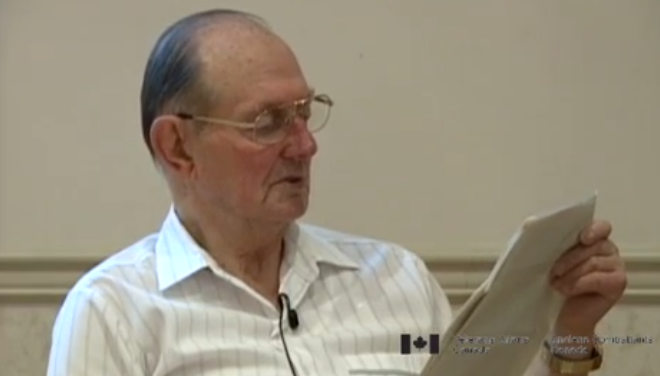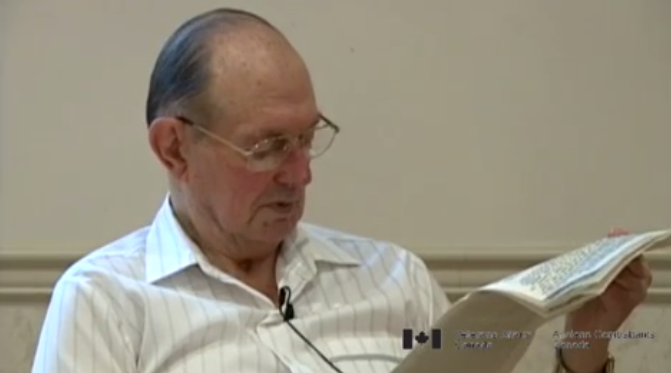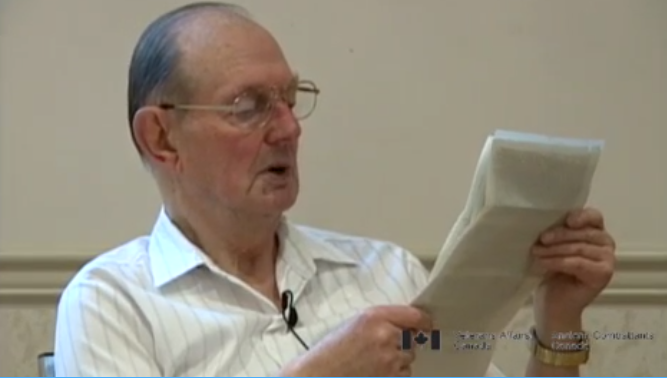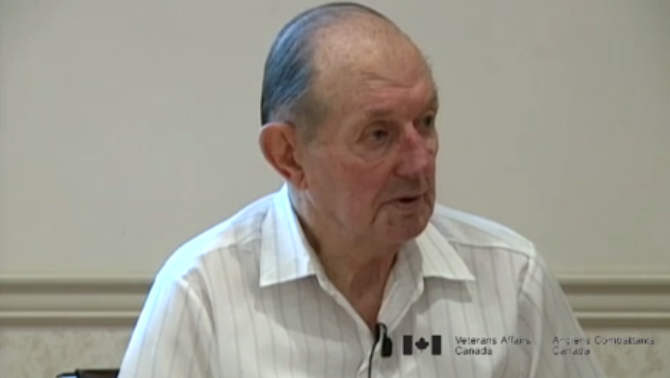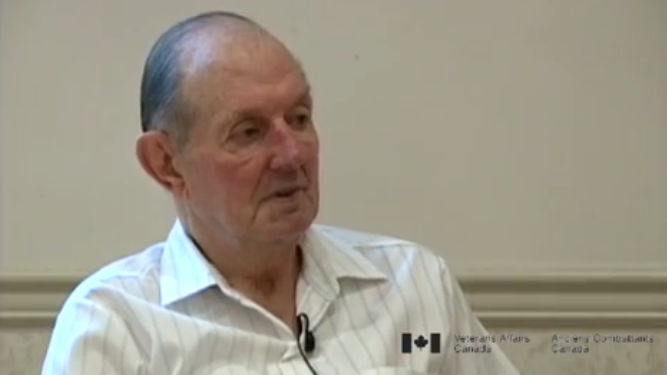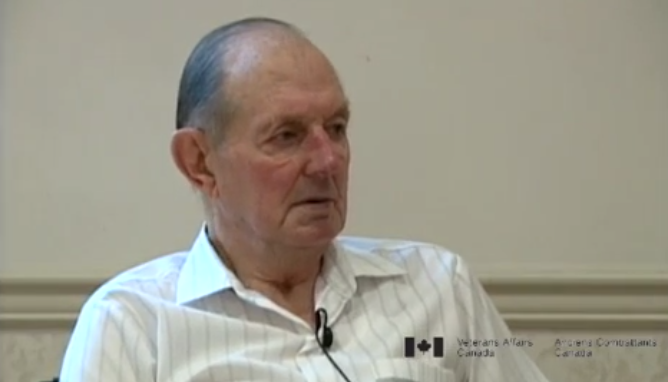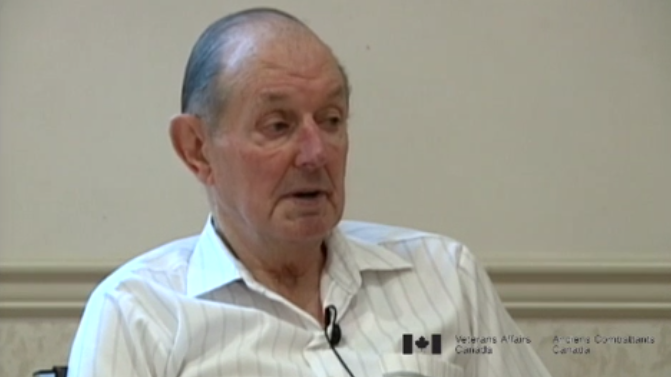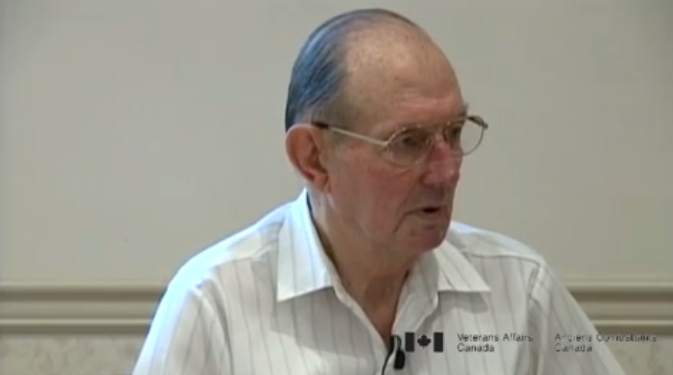I was in a movie, and it came on the screen to all military
personnel, “report to their headquarters,” and then we went up to
Wong Nai Chung Gap on December the 7th.
It was a high point in the Island where it sloped off one side
and down the other.
Originally, there was quite a bit of controversy as to why
Brigadier Lawson would have the West Brigade headquarters at
Wong Nai Chung Gap, but let’s face it,
the pillboxes and everything else were there because they kind of
anticipated the Japanese would come in from the seaside and not
from the Kowloon side.
They made a big mistake there.
There was a misconception of the Japanese ability to fight,
and rumours spread rampantly about, well, they can’t see too well
and they’re little short types that didn’t fight,
but one thing they knew to do was to obey orders.
And, if one fellow was killed, the other one would go over,
if he was killed on top of him . . . until they took the place.
They started to come, shortly after the landing.
The British troops and some of the Grenadiers were supposedly
to be holding them back, you know, but they just progressed all
through and started to come along Jardine’s Lookout,
which was opposite, in the valley on the opposite side there,
and that’s when the fun really started.
The Japanese established a machine gun post right behind the cook
house, at brigade headquarters, and had command of pretty well
anything. We had, to begin with, when we saw them coming in,
we could shoot across the valley, or the Gap
if you wish to call it that, and we made some casualties but they
just kept coming along, and then when they started up
with the machine gun, you had to keep your head down pretty well.
But I would like to read that report if you wouldn’t mind. As the
war progressed, the brigade headquarters was subjected to enemy
artillery fire although no casualties were inflicted by such
action at that time. English troops were fighting a retreating
battle from the New Territories bordered down into Kowloon.
‘D’ Company of the Grenadiers were moved from the brigade
headquarters to assist in this action, and after the evacuation
of the mainland to the Island, this company did not return
in full to Wong Nai Chung Gap and consequently the defence
of the Headquarters was up to two platoons of Grenadiers,
headquarter staff, and a few others that drifted in.
The Japs landed on the Island on the night of the 18th of
December. We were on continuous stand to from then on.
Just after dawn on the morning of the 19th, a large body of Japs
were engaged coming along to Cecil’s Ride, a path-like road
halfway up Jardine’s Lookout. Their objective was to take the
machine gun pillbox on the top of this hill.
We were given artillery support that morning by the Hong Kong
Singapore Royal Artillery. With this support and the fire from
our Bren guns and rifles, many casualties were inflicted
upon the enemy. However, they finally achieved their objective.
By about 10 o’clock, Major Linden and a captain in the Royal
Artillery attached from the Hong Kong volunteers,
and I think his name was Captain Fox,
decided to see if they could find a way out that was not covered
by Japs in order that the headquarters could get out.
Previous to this, Captain Bush had gone across the road to where
the remnants of “D” Company were and the majority
of the men were concentrated.
Two platoons had endeavoured to fight their way out.
I don't know exactly what happened as far as they were concerned.
Soon after, Major Linden and Captain Fox made their way directly
up the hill above the brigade headquarters. A volley of fire was
heard and the only indication they got was the squealing
of Captain Fox’s springer spaniel that accompanied them.



